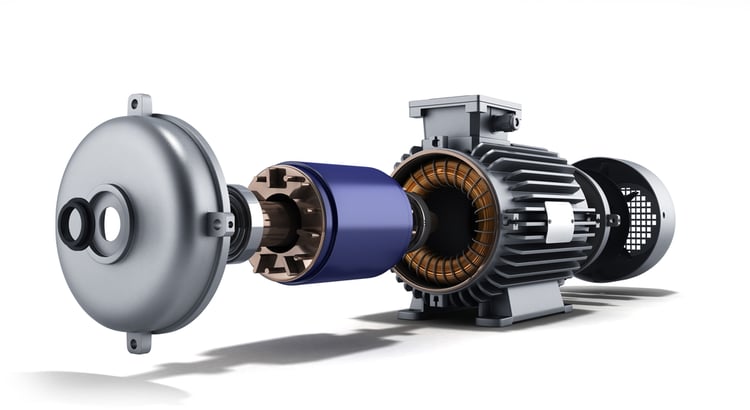Electric motors have many applications in residential, commercial and industrial buildings. Due to their widespread use, motors account for more than 45% of global electricity consumption. Industry associations like NEMA and IEC are aware of this and are constantly working on standards to improve motor efficiency.
- Higher efficiency motors can save building owners thousands of dollars every year.
- With widespread use, efficient engines could also reduce operating costs for energy companies by lessening the transmission and distribution load on the grid.
- Efficient engines also offer an environmental benefit, as a large part of the electricity supply still comes from fossil fuels.
NEMA has three motor efficiency classes: Standard, Energy Efficiency, and Premium Efficiency . On the other hand, the IEC has four classes: IE1, IE2, IE3 and IE4. The first three IEC classes are roughly equivalent to NEMA classes, while the IE4 class is called Super Premium Efficiency. These efficiency classes are specified in the IEC 60034-30-1 standard, and the latest version was published in 2014.
Find the best ways to save electricity with a professional energy audit.
The next version of the IEC standard will introduce the IE5 class, known as Ultra Premium Efficiency. Power losses are reduced by 20% or more across classes, meaning an IE5 motor will have a 20% loss reduction over an IE4 motor. The Ultra Premium Efficiency class has not yet been specified in the standards, but some manufacturers have already developed engines that will be compatible.
Estimating the Savings of an Engine Upgrade

To get an accurate calculation of how much you can save with an electric motor upgrade, an energy audit is the best option. However, the savings percentage can be estimated with the following formula:

Suppose a motor with an efficiency of 85% is replaced by a unit with an efficiency of 91%. Using the formula above, the savings value is 0.066 or 6.6%. If the existing engine consumed 300,000 kWh per year, the new one will save 19,800 kWh. Considering an electricity price of 16 cents/kWh, this equates to $3,168 in annual savings.
The dollar savings achieved from an engine upgrade are determined by three main factors:
- The difference in efficiency between the existing engine and the upgrade.
- The engine's operating schedule .
- The local electricity tariff .
To maximize the return on investment from an engine upgrade, the best approach is to start with engines that have low efficiency and long operating schedules.
Increasing the economics of an engine upgrade with speed control

When engines are used intermittently or at partial load over long periods, speed controls can generate additional savings. Variable frequency drives (VFD) reduce the input voltage and frequency supplied to a motor, decreasing RPM and power consumption. This control method is especially effective for fans and pumps, which tend to have a varying workload throughout the day.
- Considerable savings are possible if motors are upgraded to IE5 Ultra Premium Efficiency and then equipped with VFDs.
- In the case of HVAC systems, an engine upgrade can achieve synergy with other measures such as refrigerator and boiler replacements.
When upgrading engines, careful inspection of wiring and electrical protections is highly recommended. Engine upgrades are often expensive projects and protecting this investment is in the best interest of building owners. Power quality is also important to ensure motors have a long service life, as they are vulnerable to problems such as undervoltage and phase voltage imbalance. Electrical engineers can find problems that are affecting your installation and propose cost-effective solutions.

